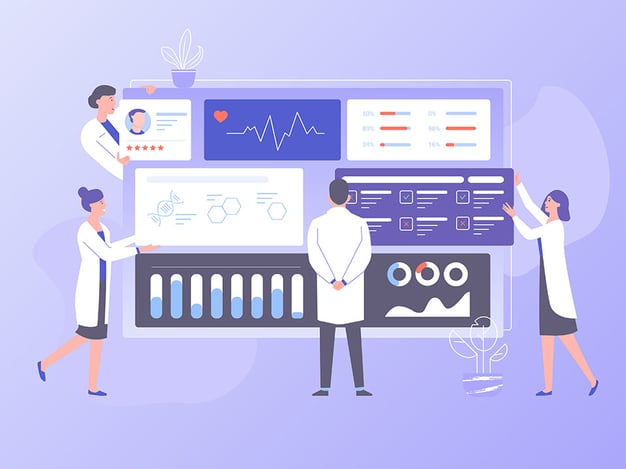
Utilization management (UM) has benefitted from an accelerated pace of innovation in recent years that has enabled higher quality care, reduced administrative costs, and progress across the entire sector. A greater reliance on the use of technology to assess and identify trend data has worked to reduce revenue risk and has led to significantly better care outcomes.
In 2022, UM will see a continued focus on the implementation of technology tools that automate and streamline processes, resulting in greater alignment between providers and payers, better care delivery and outcomes, and levels of compliance that exceed industry norms. The following three trends highlight some of the ways innovation continues to shape the utilization management and utilization review process.
1. Shift to Value-Based Healthcare for Utilization Management
The proliferation of value-based healthcare models is gradually changing the way physicians and hospitals provide care. Value-based healthcare is a model of care in which providers and hospitals are paid based on improving patient health outcomes, rather than the number of services delivered (commonly known as volume-based care or fee-for-service). The overarching goal of a value-based care framework is the restructuring of health care systems to provide value for patients, with value defined as health outcomes per unit of costs.
Over the next decade, there will be growing pressure from the Federal Government for payers and providers to phase out existing volume-based models and adopt an advanced payment method that holds them accountable for the quality and cost of care delivered to patients. But exactly how to implement and operationalize a true value-based model remains the biggest obstacle to real change. According to industry experts, the answer lies in technology.
For UM specifically, it means switching to an integrated solution that automates the largely manual preauthorization process, so that if certain qualifications are met, approvals are automatic and instant. The use of this type of solution also creates a wealth of outcome and claims data, which can be used to adjust the payers’ algorithms to improve overall utilization management.
2. Use of Artificial Intelligence and Real-Time Data to Enhance the Utilization Management Process
One of the most significant advancements in UM in recent years has been the use of real-time healthcare data derived from leveraging artificial intelligence (AI) and predictive analytics to provide a holistic glimpse of a patient for clinical review. Complex medical data can be used to predict patterns and trends in overall patient care, in turn enabling payers to further automate UM processes. This significantly reduces the need for a human clinical review, which can be labor intensive and inefficient. Clinical staff are thus freed-up from spending time on routine requests, so they can instead focus on managing medically complex cases.
As more payers transform their UM processes by leveraging automation through artificial intelligence, they can simultaneously improve their provider and member outcomes while decreasing operating expenses and medical costs. In 2022 and beyond, it is expected that AI technology will increasingly be utilized to bring prior authorization decisions to the point of care.
3. Automation and Integration of Electronic Health Records
Automation is expected to continue to streamline the electronic health records (EHRs) process, resulting in greater integration between provider and payer, leading to improved outcomes for patient members. Currently, providers must collect data from a patient’s medical record and manually send that information to the health plan via fax, phone, or portal to support a prior authorization request. Once received, the clinical reviewer at the health plan must read the information and input it themselves into a UM system, which can be time-consuming and inefficient.
However, if the provider/facility EHR could be fully integrated with the payer’s utilization management system, this process can happen seamlessly and automatically. When a request for an authorization is initiated, data from the EHR is automatically identified and sent to the payer system. The payer system can then automatically authorize the request or route it to a human clinical reviewer, depending on the complexity.
This improvement significantly reduces the administrative burden of the UM process on both the provider and the health plan side. In addition, the provider receives a near real-time response to the request, which reduces patient wait times and follow-up regarding treatments, which can markedly improve health outcomes.
As demonstrated, an effective Utilization Management program is crucial to ensuring high quality care, which in turn leads to a decrease in denial rates, as well as a reduction in healthcare costs in general. The movement toward increased innovation and automation allows us to see the future of the medical necessity review process - one that is more efficient and accurate.
Vital Data Technology’s Affinitē UM is an integrated solution that uses AI-enabled tools to automate the utilization management process in real-time for faster care and an improved experience for providers, payers, and members. For more information or to speak with one of our UM experts, please click below.



